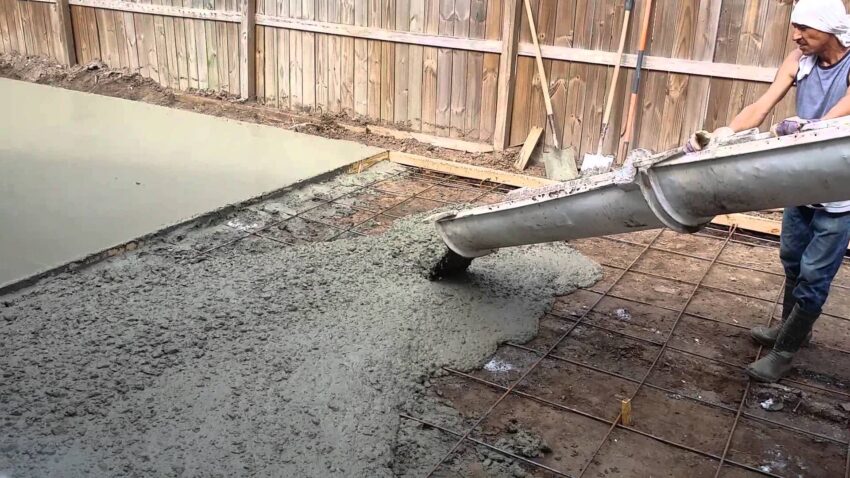Specialty Cement for Special Projects
Many construction projects today require cement with very specific properties to meet the unique demands of the structure. Specialty cements have been developed to fill this need. These cements often have enhanced mechanical properties, workability, or chemical resistance compared to traditional general purpose cements.
One area where Specialty Cement are increasingly used is in infrastructure projects like bridges, tunnels, ports and marine structures. The harsh environmental conditions in these applications require cement that can withstand demanding loads, vibration, water pressure and chemical exposure. Mass concrete projects also utilize special cements formulated for placement, curing and strength development in large volumes.
Some examples of specialty cements used in infrastructure include sulphate-resisting cements, low alkali cements and shielded cements. Sulphate-resisting cements contain lower amounts of tricalcium aluminate to prevent reaction with sulphates in soils and groundwater that can cause expansion and cracking over time. Low alkali cements minimize the risk of alkali-silica reaction in aggregates. Shielded cements have special additives that reduce heat buildup during curing of thick concrete sections.
Meeting Demands in Industrial Construction
Industrial construction brings its own challenges due to exposure to chemicals, temperature extremes and other hazardous environmental conditions. Specialty cements are engineered to hold up under these stresses while meeting performance requirements.
For example, cement used in precast industrial panels must often achieve high early strength for quick construction schedules. Calcium aluminate cements are commonly used as they gain strength very rapidly. Other industrial applications utilize slag, pozzolan or silica fume blended cements for increased durability.
The oil and gas industry is another sector that relies on specialty cements. These cements are formulated for drilling, well cementing applications and oil rig platforms. They provide good bonding to metallic surfaces, can set and gain strength in the presence of water and resist attack from salts, acids and hydrocarbons present downhole or on offshore platforms.
Specialty Cement in Marine Structures
Marine applications such as port facilities, bridges, offshore energy structures are extremely aggressive environments that demand durable cements. Special cements protect against damage from waves, saltwater, moisture, freezing/thawing and biological growth.
A common cement used in marine construction is sulfate-resisting Portland cement. Its composition reduces the risk of sulfate attack which can cause deterioration over time when sulfates are present in seawater. Shotcrete often employs silica fume or alumina cement to gain strength rapidly underwater and resist washout during application. Cement with hydrophobic additives minimizes water absorption in structures like jetties and breakwaters.
The cement in grout for pile foundations installed offshore must set up reliably despite water immersion. Shielded grouts lessen heat rise and limit cracking. Special epoxy systems provide watertight sealing for any gaps that develop. Underwater repairs utilize calcium aluminate or magnesium phosphate cement variants that set even when completely submerged.
Cement Technologies for Unique Applications
Where projects call for uniquely demanding performance or construction methods, advanced cement formulations have been developed to handle the specific requirements. Some examples include:
– Magnesium phosphate cements serve as thermal insulating and fire resistant systems. Their composition provides refractory properties up to 2400°F.
– Calcium aluminate cements set and achieve strength very quickly even in cold temperatures, making them a go-to for fast-track projects and repairs.
– Microsilica and high-range water reducer blended cements allow for reduced permeability and enhanced strength in thin overlays and toppings used to resurface roads and parking structures.
– Special geopolymer cements offer higher early strength and lower CO2 emissions compared to ordinary Portland cement. Formulations using class F fly ash or metakaolin serve as sustainable alternatives.
– Cementitious grouts for projects requiring pumpability through small pipes use special additives for flowability and minimum bleeding or segregation.
Outlook for Growth in Specialty Cements
In Summary, as infrastructure ages and construction projects increase in technical complexity, demand will continue expanding for specialty cements able to meet exacting performance criteria. Their enhanced properties provide resilience against worsening conditions while enabling fast-track schedules through qualities like rapid strength gain. Developments in blended cement technologies additionally support sustainability goals within the industry. Overall, specialty cements bring robust solutions to the construction challenges of today and tomorrow.
*Note:
1. Source: Coherent Market Insights, Public sources, Desk research
2. We have leveraged AI tools to mine information and compile it

